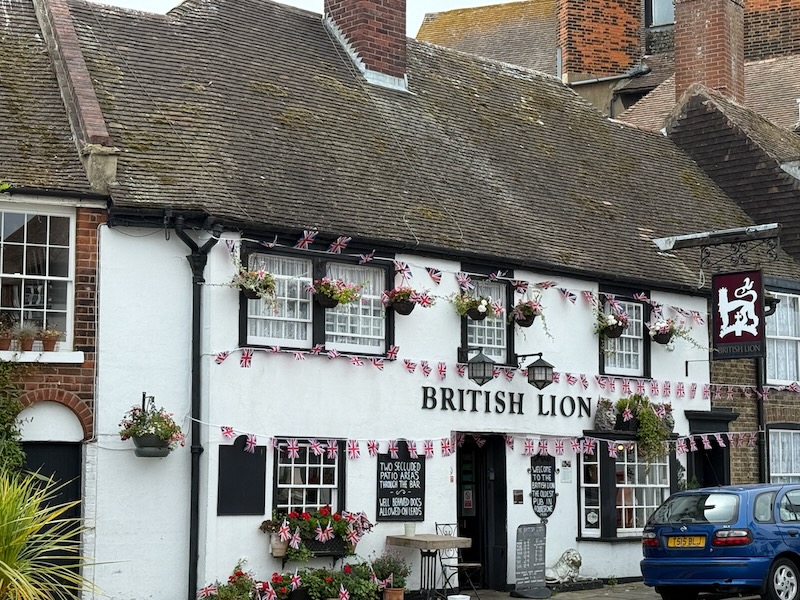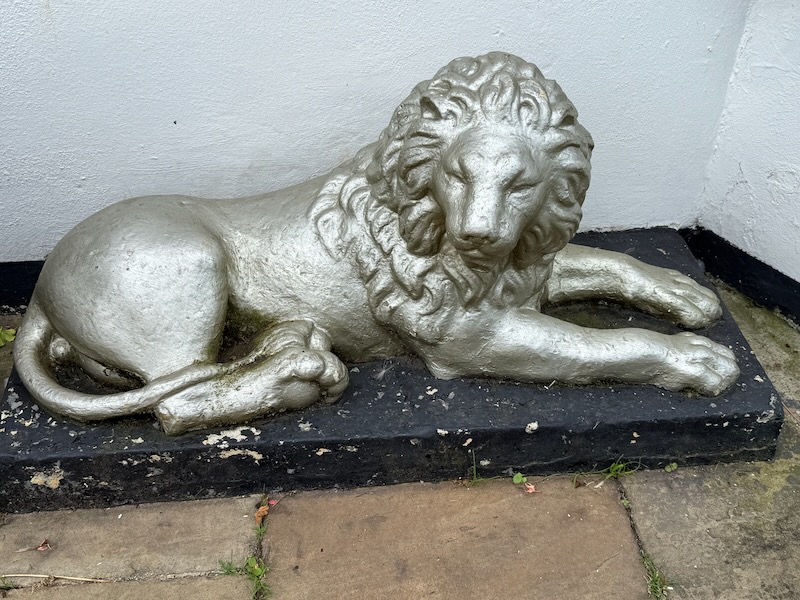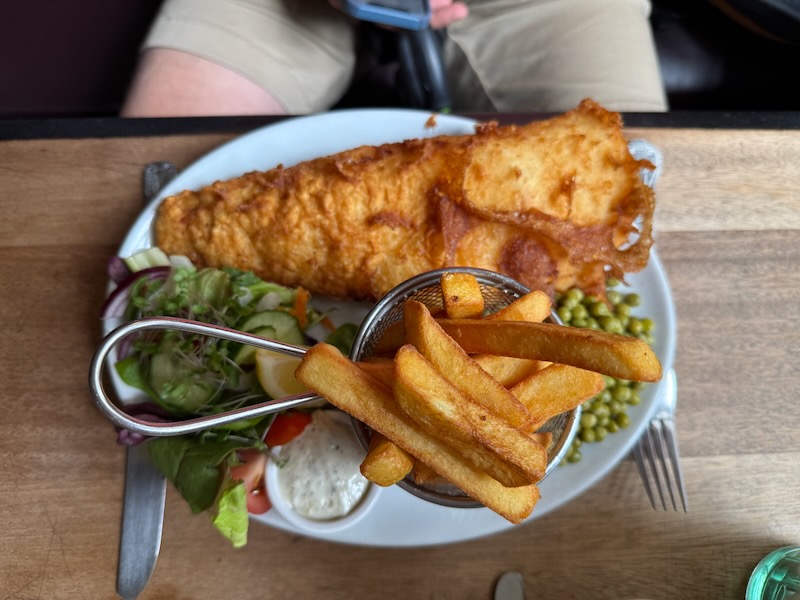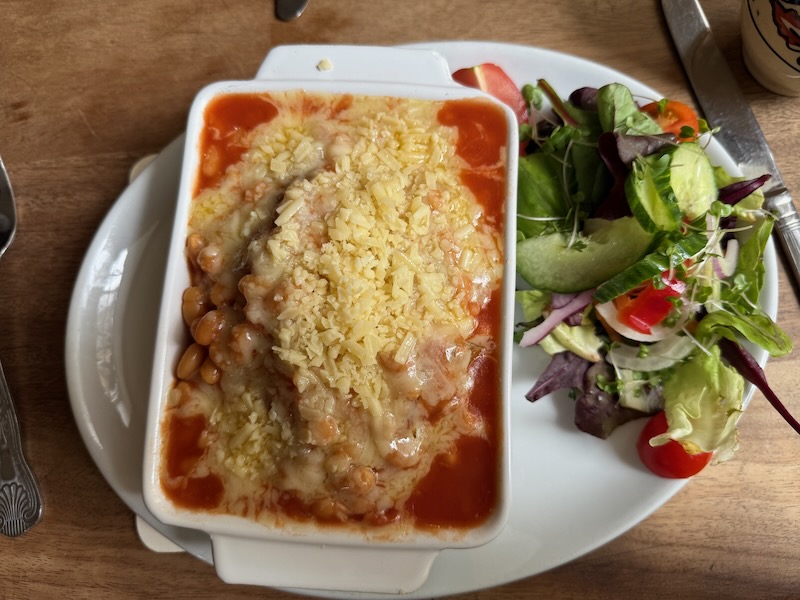Our Blog - August 2025 - England trip - Folkestone
As we got off the train, we decided to do a walking tour of the older areas of Folkestone: The Bayle and Old High Street. Like many places in England, there has been a settlement here since the Mesolithic Era and a nunnery was founded here in the 7th century. During the 13th century, it developed into a seaport, and the harbor developed during the early 19th century to defend against a French invasion. Folkestone expanded further west after the arrival of the railway in 1843 as an elegant coastal resort. It used to have a bustling harbor but with the Channel Tunnel opening, the ferry services moved out of Folkestone (to places like Dover). It is a fairly decent sized city with over 47,000 people.
Old High Street connected the Bayle (short form of Bailey from Motte and Bailey castle) with the harbor, and it contains a number of buildings dating back to the 18th century. This was one of Charles Dickens' favorite areas and there are various plaques that talk about his association with the area. In the UK, "High Street" is the main street of town and so this was the main street of the historical part of Folkestone.

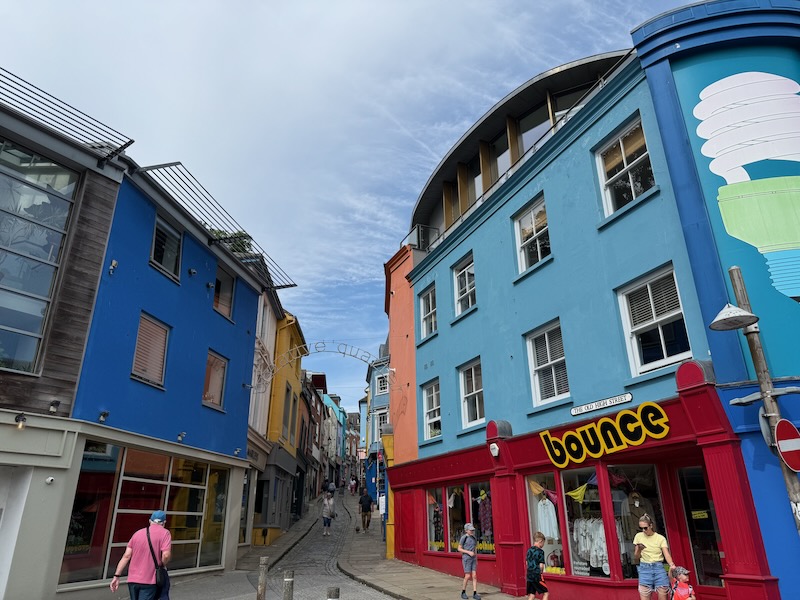
St. Mary and St. Eanswythe's Church dates back to the 13th century, the arches of the central Tower, the Lady Chapel, and St. Eanswythe's Chapel are 15th century, and the rest was rebuilt in the 19th century. In 1885, the remains thought to be those of St. Eanswythe were found in the walls. The nave has an interesting ceiling held up by Gothic arches. There were a couple of interesting paintings on the walls that were done in 1891. One has an inscription saying it shows King Ethelbert giving an audience to Saint Augustine and the other is Saint Augustine holding a conference with Celtic bishops on the banks of the Severin (this occurred around 603 AD)
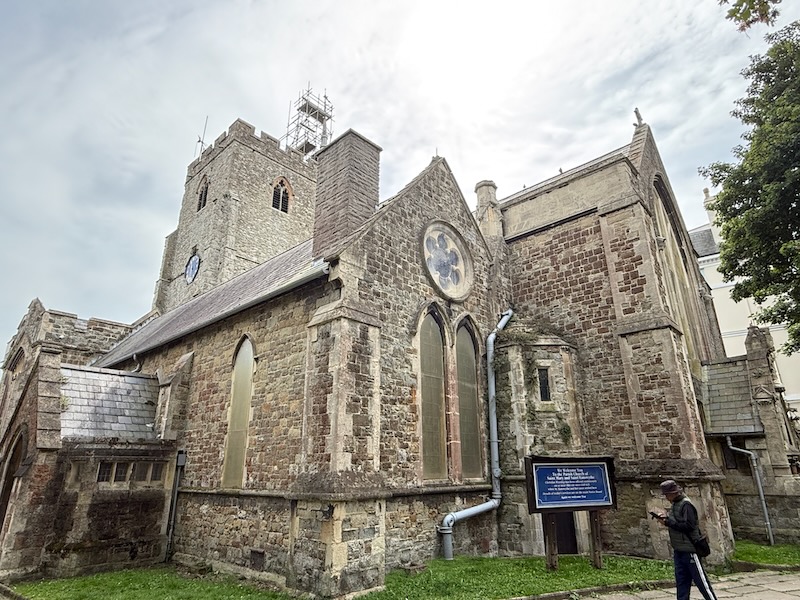
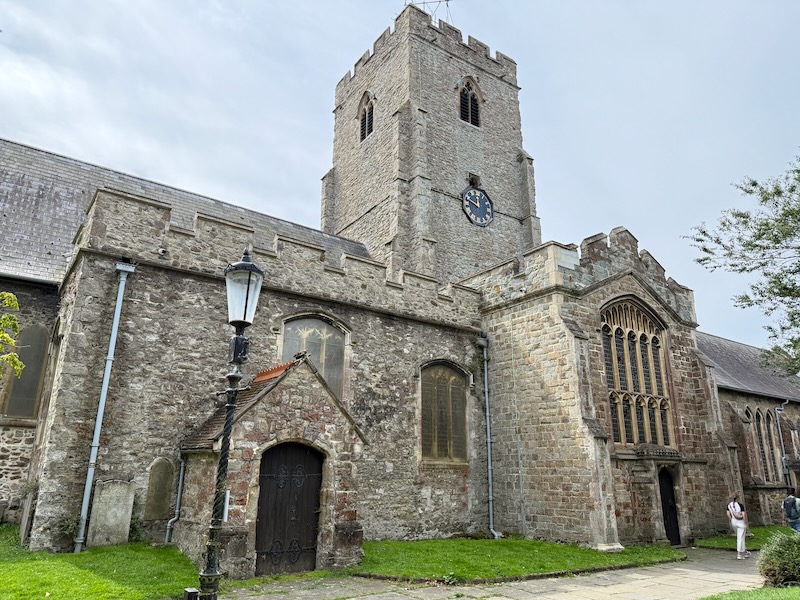
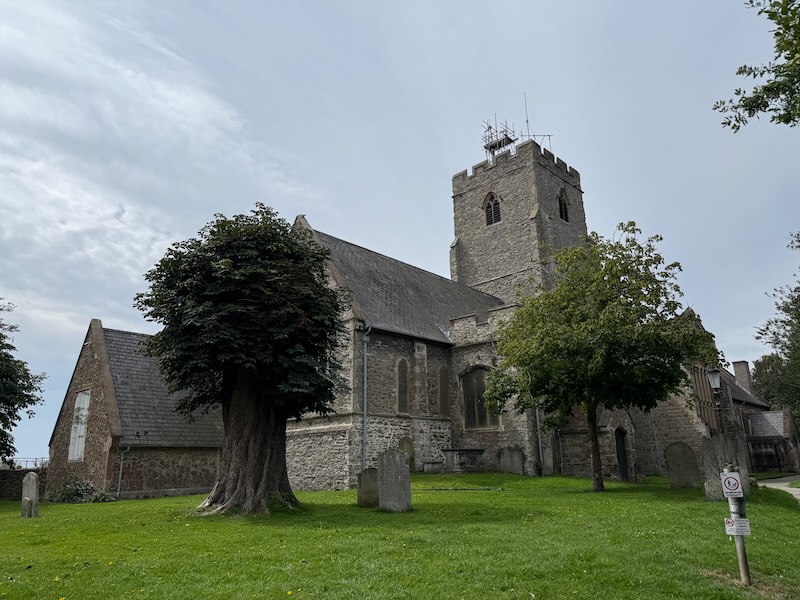
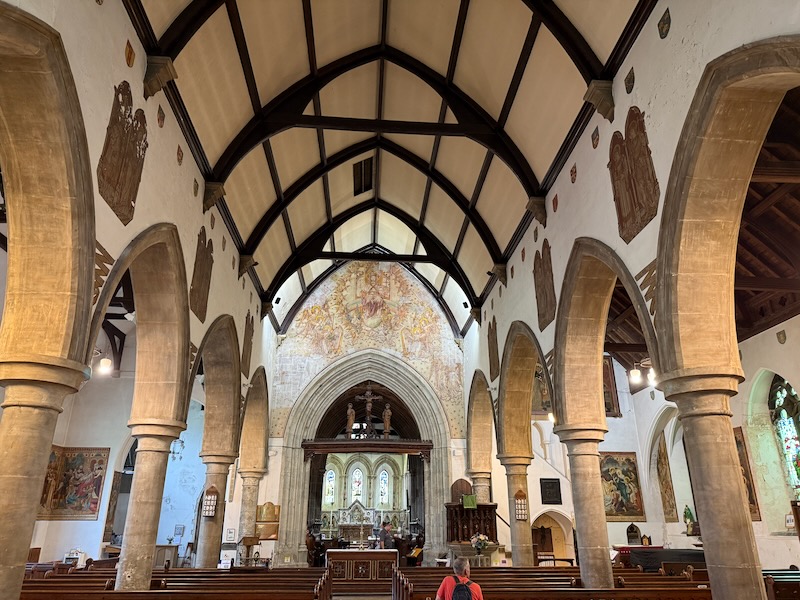
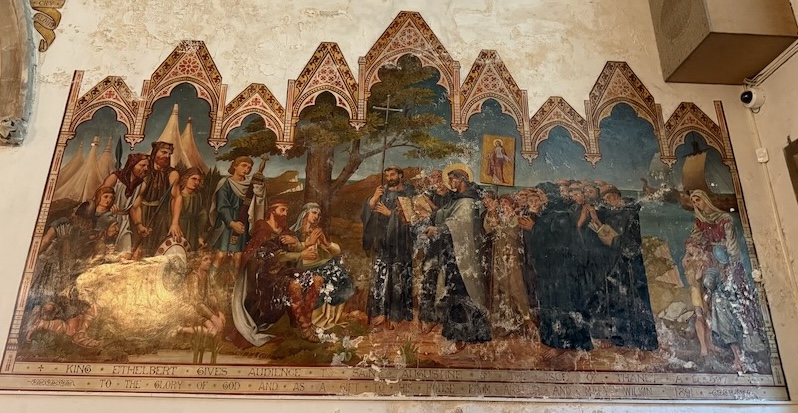
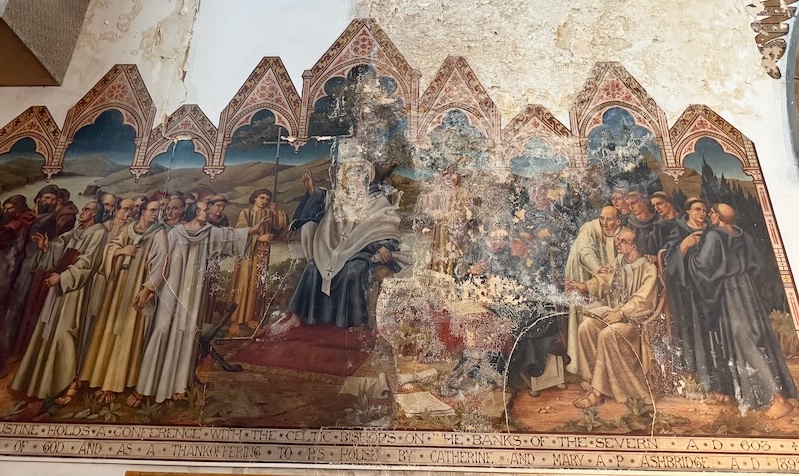
The medieval font dates from the 13th century and was actually "rediscovered" in the 19th century after ending up inside a wall. When the wall was removed to add an extension, they found the font.
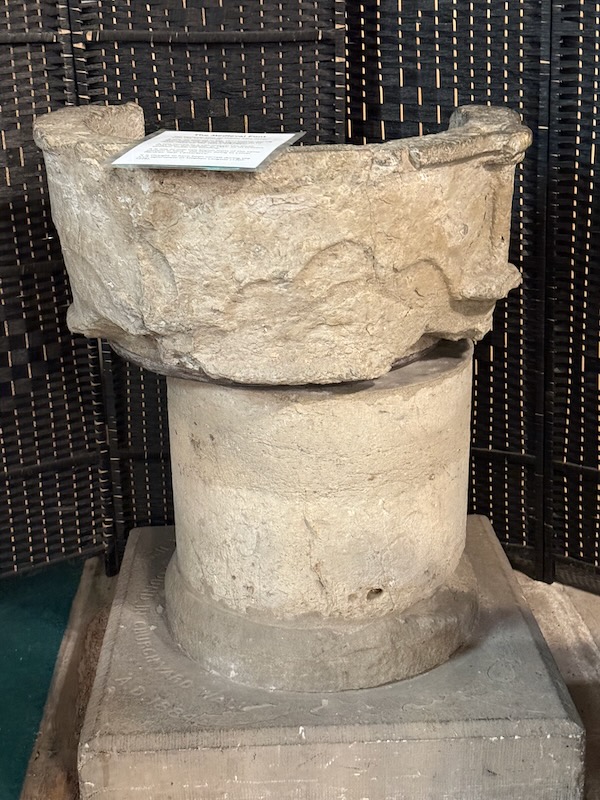
A couple nice stained-glass windows.
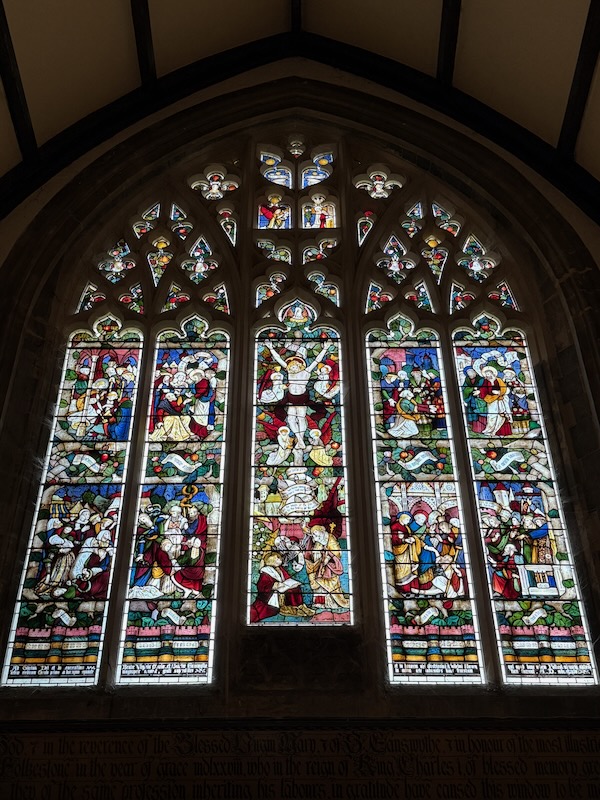
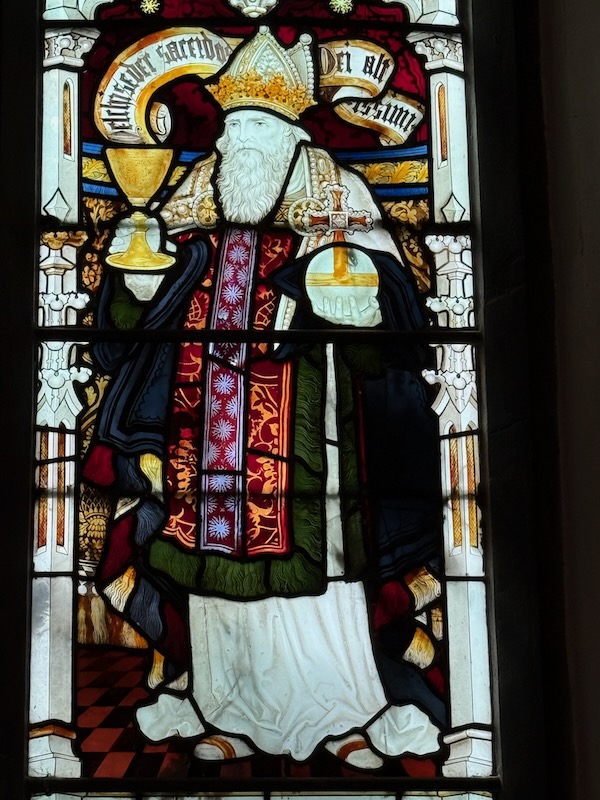
The pulpit dates back to 1913.
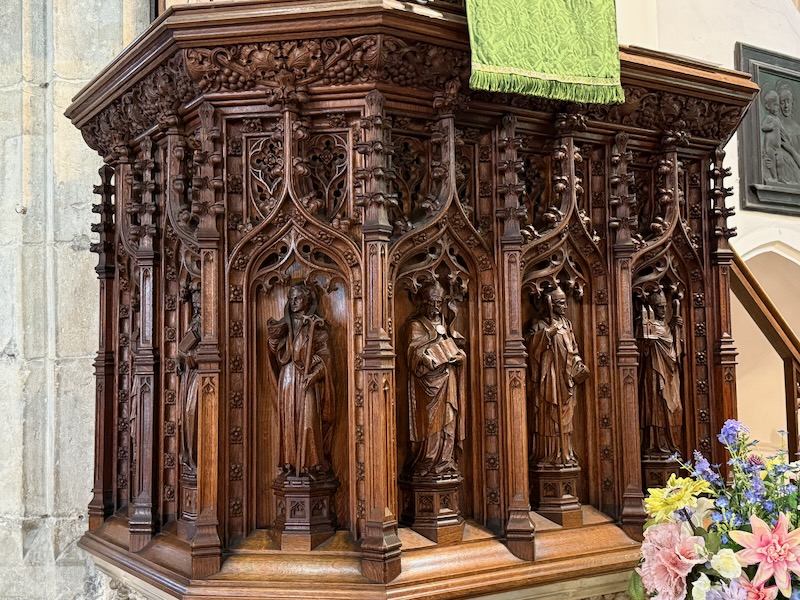
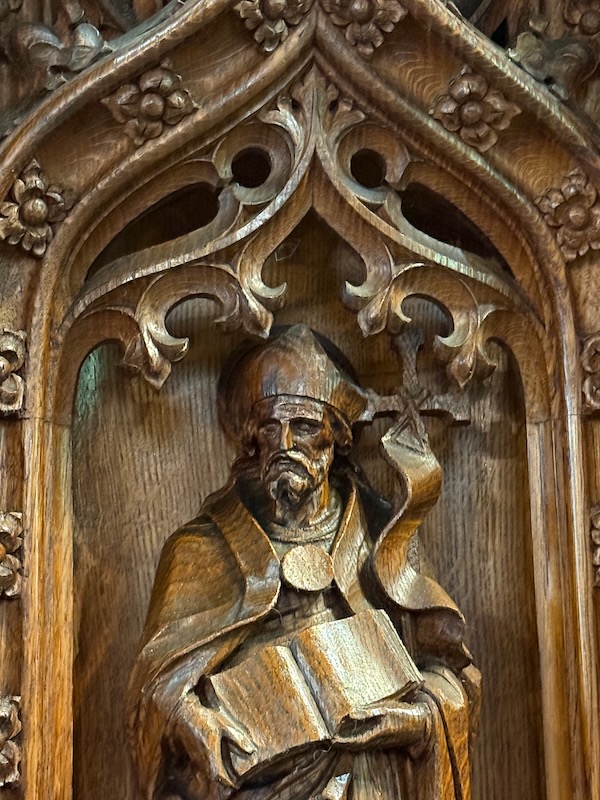
If you remember the first interior picture, you can see the nave with an altar, but then there is another section behind this one. This design goes back to a time when the religious leaders were kept separate from the parishioners. Here we have a slightly different roof and seats for the choir. This Sanctuary was built in 1230 after a fire destroyed the original 1138 structure. Originally, it was at the same level as the nave but in 1870, after years of neglect, it was renovated and the sanctuary raised up slightly. The 2nd picture here shows the painting over the doorway into this Sanctuary (you can also see this above that middle arch in the picture above).
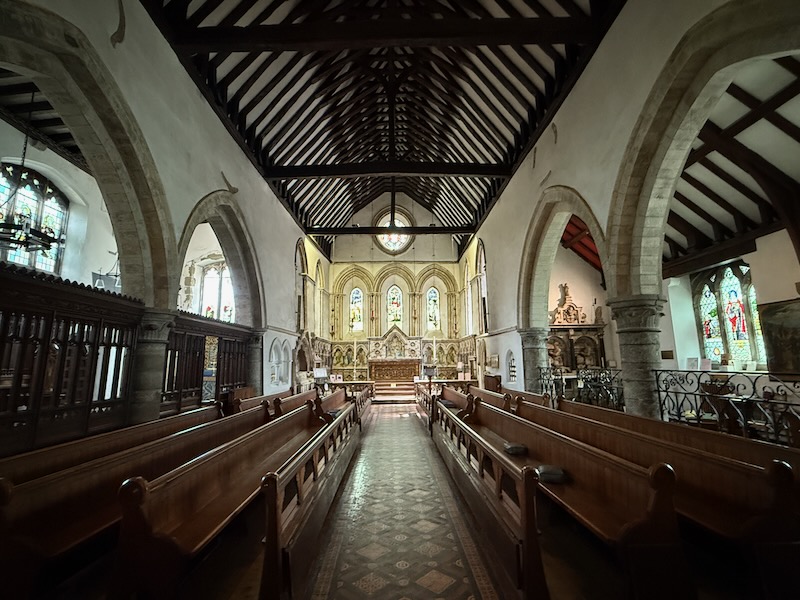
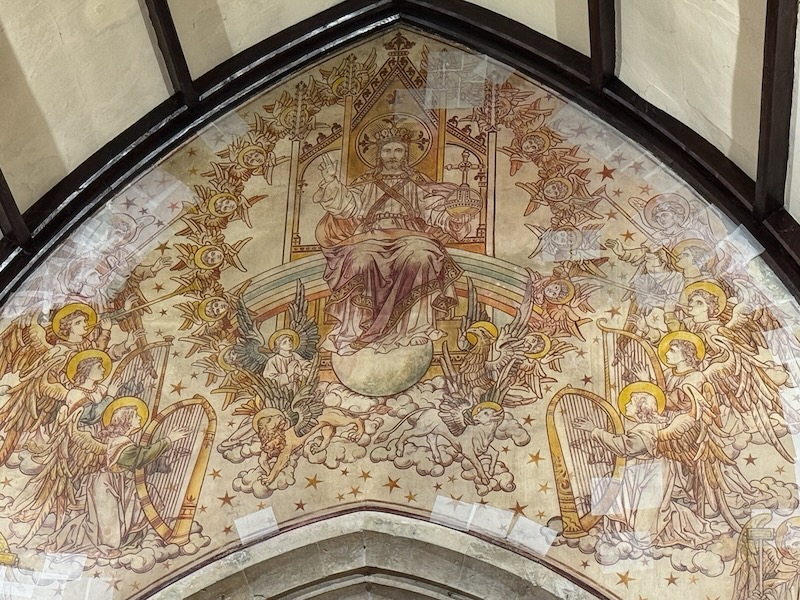
On one wall is a monument from the 17th century for John Herdson, a former Lord of the area.

The Lady Chapel was restored in 1883 and then again in 1934. The carved wooden triptych shows 3 scenes from the life of Mary, and was moved here from a chapel in the Royal Victoria Hospital.
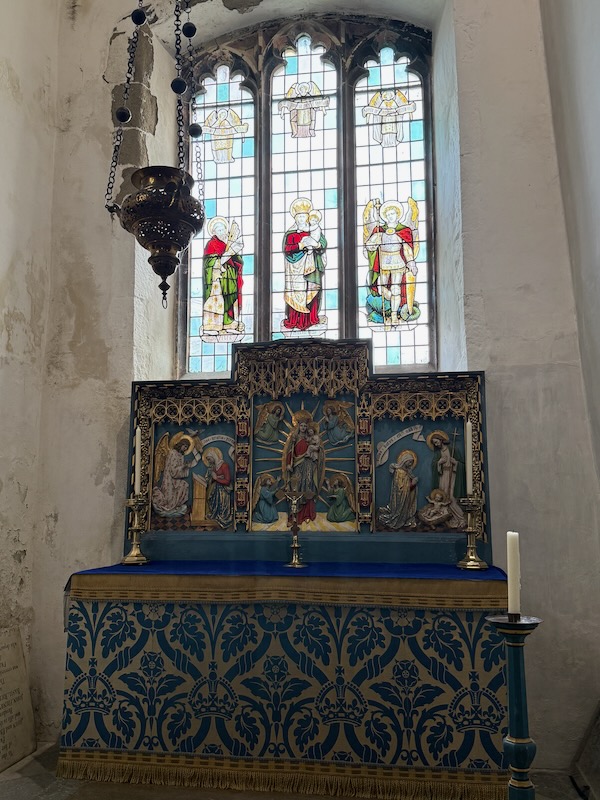
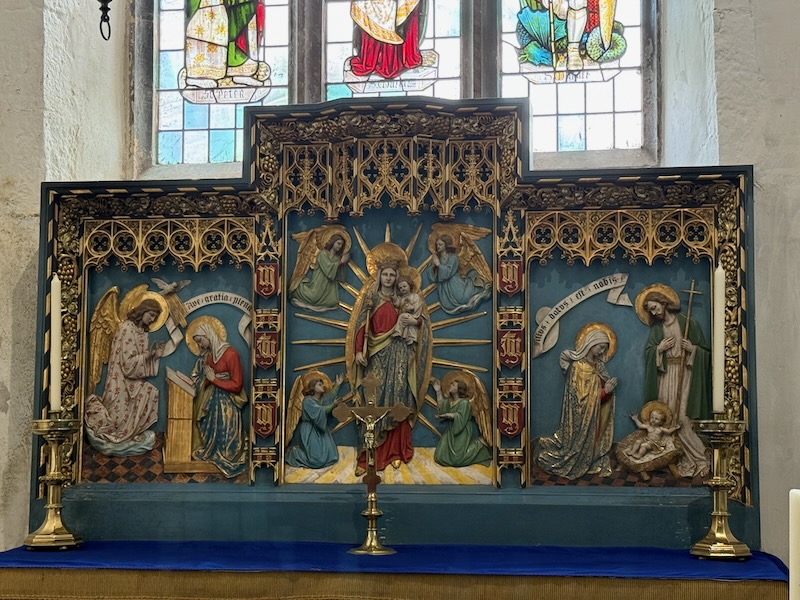
Not only were dogs welcome in the church, they even had a puppy that you followed around to the various points of interest.


These white villas are called the Albion Villas, built in 1843. Villa #3 has a plaque commemorating Charles Dickens living there during the summer of 1855. While here, Dickens wrote part of "Little Dorrit", a monthly article for a magazine called "Household Words" and also gave a public reading of "A Christmas Carol", one of his earliest performances. You can see the blue plaque on the left-hand villa in the 2nd picture.
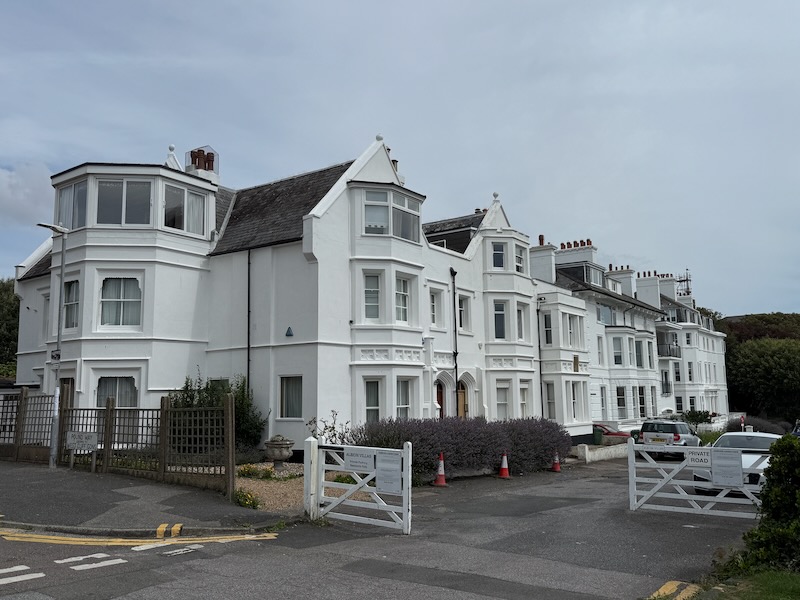
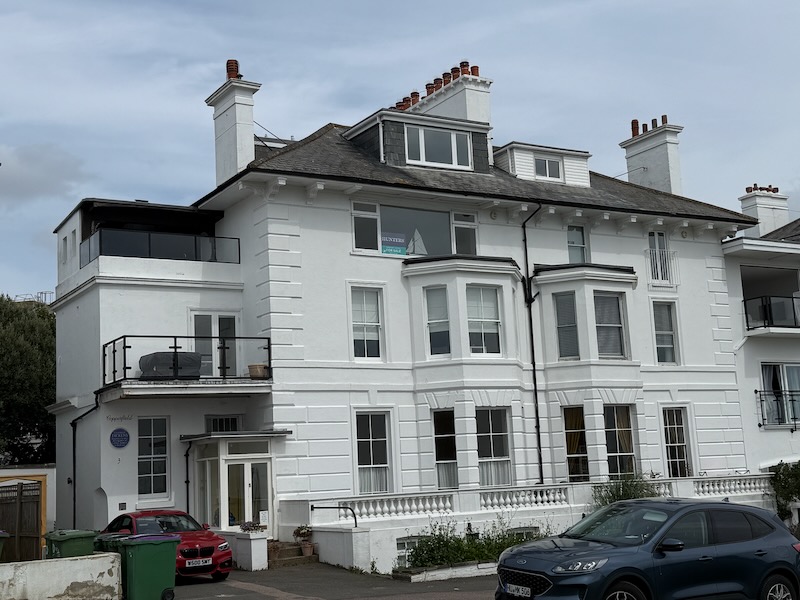
Here we started a trend that you will see throughout our vacation ... pubs! Most of our meals out were in pubs, including lunches, some dinners, and Sunday roasts. This one is the British Lion, the oldest pub in Folkestone (circa 1460). Supposedly, Dickens would come here often when he lived at the Albion Villas. We went with what we think of as very British food ... fish & chips and a jacket potato (a baked potato for us Americans) with baked beans.
